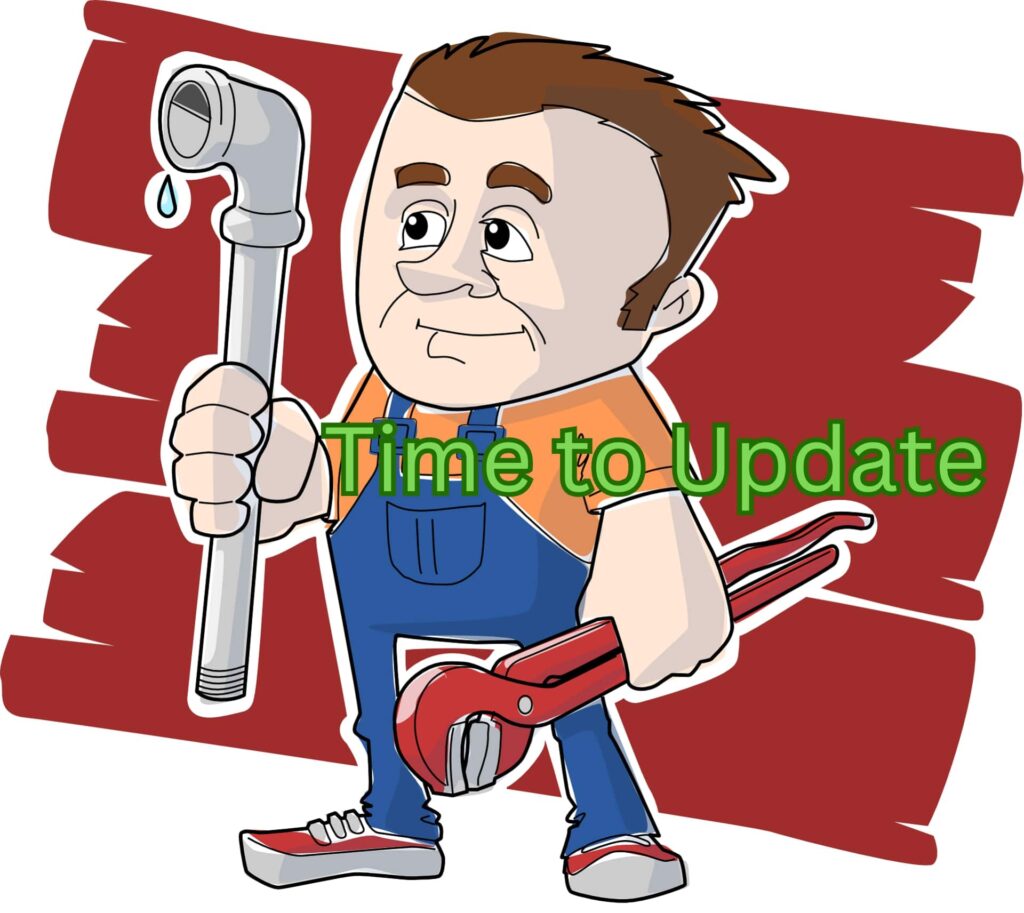Moving into a new home is an exciting milestone. You have worked hard to find the perfect house and finally, it is time to make it your own. But before committing to such a major purchase, you’ll want to make sure that everything is in good working order. An important part of that process is a thorough plumbing inspection. It will not only help detect any existing or potential plumbing issues but also give you a feel for the overall condition of your new home.

To help you with this task, we have prepared a comprehensive plumbing inspection checklist for a new home. By following this guide, you can make sure that every aspect of your home’s plumbing has been thoroughly inspected and that any necessary repairs or replacements are identified. So grab a pen and paper, or open up your notes app, and let’s get started!
Table of Contents
- 1 Check water pressure
- 2 Is the water heater working properly?
- 3 How does the sewer system work?
- 4 Inspect all visible pipes and fixtures
- 5 Inspect all supply pipes and valves
- 6 Check the condition of drains and traps
- 7 Don’t forget the outdoor plumbing
- 8 Additional plumbing question for the homeowner
- 9 Final Thoughts
Check water pressure
The water pressure test is carried out to identify any pipe leaks and evaluate water pressure and flow within the house. Older plumbing systems often used cast iron for sewage or galvanized steel for water, but newer systems use copper or PVC pipes. Galvanized pipes are prone to rust and corrosion, which can result in reduced water pressure or even pipe bursts. For instance, low water pressure in the kitchen sink may signal pipe issues caused by corrosion or blockages. We recommend keeping an eye out for any visible leaks or strange noises, such as rattling or banging, which may indicate a problem with the pipes.
Is the water heater working properly?
We rely on hot water for many daily tasks, from showering to washing dishes and doing laundry. A functional and efficient water heater is crucial for a comfortable home.
The location where the heater is matters a lot. Check where it is mounted and find out if its placement is up to code. A plumber can assess its capacity, age, condition, and the need for replacement by inspecting:
- Water temperature and pressure relief valve
- Corrosion or rust on the tank and pipes
- Age of the water heater (typically, they last around 10 to 15 years)
- Sediment buildup in the tank
- Proper water supply and connection to gas or electricity
- Insulation around the tank and pipes
- Adequate clearance from nearby objects
- Any visible leaks or signs of damage
How does the sewer system work?
Is the home connected to a municipal sewer line or does it rely on a septic system? Request access to the house’s schematics or diagrams to understand how the sewer system runs. Check for clogs and blockages, as well as any signs of sewage backups or slow drains. A sewer camera inspection may be necessary to identify potential issues within the pipes, such as tree root intrusion or cracks. Additionally, check the condition of the sewer line and septic tank (if applicable) to ensure it is up to code and functioning properly. See our guide on septic system maintenance.
Inspect all visible pipes and fixtures
One of the most important aspects of a plumbing inspection is checking for any visible issues with the pipes and fixtures. Look for signs of leaks, such as water stains or mold growth, around sinks, toilets, and tubs/showers. Check for proper drainage by running water in all sinks/tubs/showers for a few minutes and flushing all toilets. Make sure that there are no dripping faucets or running toilets. Examine the condition of the pipes – do they appear old or corroded? Are there any obvious repairs that have been made? Does the water have a strange color or odor?
Inspect all supply pipes and valves
Water supply pipes are responsible for delivering clean water to your home, so it is crucial to inspect them for any potential issues. Gate valves, which control the flow of water into your home, should be located near the water meter and main shut-off valve. Check for any visible leaks or damage on these valves and make sure they are functioning properly. Supply pipes, on the other hand, are responsible for distributing water throughout your home. Look for any visible leaks or signs of corrosion on these pipes and make sure they are properly connected to fixtures.

Check the condition of drains and traps
Are all sinks, tubs, and showers draining properly? Slow or clogged drains can be a sign of a bigger issue, such as a blockage in the main sewer line. Make sure to remove any visible hair or debris from drains and check for any odors or gurgling noises when the water is running. P-traps, which are located under sinks and prevent sewer gasses from entering your home, should also be inspected for proper sealing and cleanout access. For homes with a septic system, make sure to check the condition of the drain field and septic tank for any potential problems.
Don’t forget the outdoor plumbing
Many homeowners overlook their outdoor plumbing when performing an inspection, but it is just as important as everything inside. A plumbing inspection checklist for a new home should include checking the outdoor faucets and sprinkler systems. Look for any visible leaks or damage, as well as ensure proper drainage and water flow. Check that outdoor pipes are insulated to prevent freezing during colder months. If you have a pool or hot tub, inspect the pumps and filters to ensure they are working correctly. Make sure gutters and downspouts are clear, and water is properly draining away from the house. For homes with a well, have the water tested for any potential contaminants.
Additional plumbing question for the homeowner
As you go through your plumbing inspection checklist, don’t be afraid to ask questions or seek clarification from the previous homeowner or a professional plumber. Some additional questions you may want to ask include:
- How old is the plumbing system?
- Have there been any past plumbing issues or repairs?
- Are there currently any ongoing plumbing problems?
- Do you have a preferred plumber or plumbing company you would recommend?
- Is the home equipped with any water treatment systems? If so, when were they last serviced?
- Are there any warranties or guarantees on the plumbing system?
- Have there been any major renovations or changes to the plumbing system?
- Is there a history of hard water in the area? If so, has it caused any issues with the plumbing system?
- Are there any known lead pipes in the plumbing system? If so, have they been replaced?
- Has the sewer line ever been inspected or cleaned?
- Are there any specific maintenance tasks that should be done regularly for the plumbing system?
- What is the estimated water usage and cost for the home?
Final Thoughts
By asking these questions, you can gain a better understanding of the plumbing system in your new home and identify any potential red flags. It’s always better to know as much information as possible about your home’s plumbing to avoid any surprises or costly repairs down the road. If you find any issues during your inspection, you can use this information to negotiate repairs or replacements with the seller before finalizing the deal. With this plumbing inspection checklist, you can ensure that your new home’s plumbing is in good condition and ready for your family to move in. So, take the time to thoroughly inspect all aspects of the plumbing system, and don’t be afraid to ask questions. Your future self will thank you!


